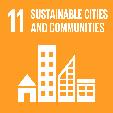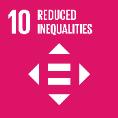

MuniFin investor presentation

November 2025


Our business and financials

MuniFin in brief
MuniFin is the leading provider of financial services to Finland’s municipal sector, wellbeing services counties sector and affordable social housing
• Bloomberg ticker: KUNTA
• Funding guaranteed by the Municipal Guarantee Board (MGB)
• Credit ratings are in line with those of the Finnish sovereign
• Credit institution supervised by the ECB
• Credit institution of systemic importance to the Finnish financial system (O-SII)
Sustainability is a core value at MuniFin
Our sustainability Agenda* summarises the main themes and goals of our sustainability work.
Theme 1: Foundation of the Finnish welfare society
Theme 2: Driver of the green transition
Goal:
Enabling the foundations for a sustainable welfare state
Indicator
•Amount of social finance
Target value
•8% of the long-term customer finance portfolio
Target year
•2030
*Sustainability agenda and its targets will be updated by the end of 2025

Goal:
Promoting investments that benefit the climate and environment
Indicator
•Amount of green finance
•Financed emissions from buildings
Target value
•25% of our long-term customer finance portfolio
•Emission intensity (buildings) 8 kgCO2e/m2
Target year
•2030
•2035
Who we finance
MuniFin is the leading provider of financing for the Finnish public sector. We have three customer sectors.


Municipality sector
• Responsible for providing many statutory services to their residents.
• Municipalities can provide these services also through corporate entities under municipal control or through joint municipal authorities.
Wellbeing services counties sector
• Self-governing regions that have been responsible for organizing healthcare, social welfare and rescue services in Finland since the beginning of 2023.
• The Finnish wellbeing services counties sector also includes joint county authorities for wellbeing services as well as corporate entities owned by the counties.
We provide our customers the following financing services and products:
• Loans
• Property leases
• Green and social finance
• Risk management
• Analysis and reporting solutions
• Digital services for portfolio management and financial planning
Affordable social housing sector
• Affordable social housing is mainly provided by municipality owned companies and nationwide non-profit organisations.
• Affordable social housing can be financed in two ways. The first is through interest subsidy loans. The state of Finland guarantees these loans and pays their interest subsidies. The second is through loans municipally owned companies take out from MuniFin for affordable social housing. These loans do not have a state interest subsidy, but they come with a 100% municipal guarantee.
Customer finance portfolio
EUR billion* Long-term customer financing in H1 2025
New long-term customer financing 2.4 EUR billion* All customer financing carries a BIS 0% risk weight*
Loan portfolio in the balance sheet*
MuniFin has never had any credit losses from the customer-finance portfolio
No final credit losses are expected to arise, as all our customer financing receivables are from Finnish public sector entities or accompanied by a securing public sector guarantee or State of Finland deficiency guarantee supplementing real estate collateral.
Housing organisations (icl. housing corporations controlled by municipalities)
Wellbeing services counties
Municipalities
Joint municipal authorities
Municipalities-controlled entities
MuniFin conducts a credit assessment on its customers. The assessment covers both economic and qualitative factors, including indicators of solvency, debt-servicing capacity, profitability and ESG.
Case Jokeri Light Rail speeds up lowemission public transport in the Helsinki Metropolitan Area


Photo: Raide-Jokeri / Kaupunkiliikenne
Case Service Center
Metsola supports a smooth and independent everyday life for deaf, deafblind, and sign language users


Photo: Sami Lamberg
Financial performance H1 2025
Strong liquidity position
Liquidity Portfolio
EUR, billion
• Sufficient liquidity to cover continued undisturbed operations for at least 12 months
• Secondary source of funding: Monetary policy counterparty of the Bank of Finland
• The majority of the liquidity portfolio is classified as HQLA Level 1 assets
Security investments in the liquidity portfolio 4.8 EUR, billion Average rating
3.5 Average maturity in years
Guided by MuniFin’s Sustainable Investment Framework
• Investment/Issuer selection, exclusion and controversy monitoring
• Applying issuer-level ESG management to the portfolio management process covering the entire portfolio
• ESG score of all security investments held over that of benchmark index
• Separate thematic investment portfolio within the security investments portfolio
Size of socially responsible investments
994
EUR, million
The Finnish public sector structure and MuniFin’s guarantee

The Finnish public sector has a three-tier structure

Comprises the ministries and the national agencies operating in their administrative branches
Services provided:
• Police
• Defence
• Highways
• Universities
• Judicial system
• Statistics and research

Currently 21 wellbeing services counties* and additionally joint county authorities for wellbeing services and corporate entities under their control
Services provided:
• Health and social
• Fire and rescue services

Central Government Wellbeing services counties Municipalities *In addition Helsinki will organise its own health, social, fire and rescue services
Currently 308 municipalities** and additionally joint municipal authorities and corporate entities under their control
Services provided:
• Education and day care services
• Cultural, youth and library services
• Urban planning and land use & environmental services
• Water and energy supply & waste management
Finnish municipalities: Strong revenue base and close link to Central Government



By law, a Finnish municipality cannot be declared bankrupt
• Bankruptcy Act (120/2004)
Close link to the central government
• Highly independent and have a parallel status with the Central government confirmed in the constitution dating from 1917
Strong revenue base
• Municipalities have an unlimited right to levy taxes on their inhabitants (municipal tax rate)
• Other revenues taxation related charges from service production

Budget Control
• Ministry of Finance is responsible for monitoring the municipal sector
• By law municipalities have an obligation to balance their finances over a four-year time frame
Revenues (ca. EUR 25 billion)
Expenditures (ca. EUR 25 billion)
Municipal Guarantee Board (MGB) provides the guarantee for MuniFin’s funding

• Aa1 (Stable)/AA+(Stable) rated
• MGB was established by an act passed by Finland’s parliament in 1996 for the purposes of safeguarding and developing the joint funding of municipalities


• All Finnish mainland municipalities* are members, representing 100% of the taxation power in mainland Finland. Membership is permanent
• Members of the MGB are jointly liable in proportion to their population figures for the guarantee provided by MGB for MuniFin’s funding
• MGB can collect from members without a court order
• All debt guaranteed by MGB is BIS 0% risk-weighted in the EU area
The Finnish economy and economic outlook

Highlights of the Finnish economy
5.6 million people
2.9 % of GDP above average gross domestic spending on R&D
2035 Finland aims to be carbon neutral
• Happiest country in the world eight years in a row
• The most stable country in the world
• One of the top OECD countries in education
• The best governance in the world
• The water richest country in the world
• The most forests in Europe
54
890 US$ GDP per capita
Largest manufacturing sectors:
• Machinery
• Electrical equipment
• Paper and metal products
• Finns drink most coffee per person in the world Sources: Statistics Finland; OECD; Ministry of the Environment; The United Nations annual World Happiness Report, 2025, 2024, 2023, 2022, 2021, 2020, 2019, 2018; The Fund for Peace Fragile States Index 2022; OECD, Better Life Index: Education; Legatum Institute, The Legatum Prosperity Index 2021: Finland; Keele University, The Water Poverty Index: an International Comparison; FAO, Global Forest Resources Assessment; International Coffee Organization, Coffee Trade Statistics

Economic outlook of Finland
• Due to rising unemployment and weak private consumption, Finland’s economic growth will remain slow in 2025. However, business cycle expectations have already improved, and GDP growth is expected to accelerate in 2026–2027.
• The growth outlook is supported by the upturn in investments and the strengthening of industrial order books. Domestic consumer demand is also expected to gradually recover as consumers’ purchasing power improves and unemployment begins to ease.
• Geopolitical tensions continue to make the global economic environment vulnerable, and growth prospects may still face setbacks.
• Finland’s debt/GDP has risen in recent years due to costs caused by the pandemic, increased defense spending, and slow economic growth. However, the debt ratio is still slightly below the euro area average.
The Finnish Economy
Know-how intensive production base
• Services account for ca. 70% of GDP
Trade oriented open economy - export-to-GDP ca. 44%
• Exports largely made up of investment goods and intermediate products
• Services’ share of total exports doubled since 2007-2008
• Roughly 56% of exports inside the EU. Largest trading partners (export and import) being Sweden, USA, Germany, Netherlands and China.
Our funding

Funding Strategy


Funding breakdown 2024
Successful public market strategy

EUR FIXED BENCHMARKS 18.8 bn
11/2026, 09/20271 , 01/2028, 04/2028, 09/20281 , 05/20291 , 08/2029, 09/20291, 12/2029,
07/2030, 10/20301, 03/2031, 02/2032, 06/20321, 02/2033, 02/2034, 09/20352

USD FIXED BENCHMARKS 11.8 bn
03/2026, 09/2026, 01/2027, 04/2027, 08/2027, 12/2027, 10/2028, 01/2029, 10/20291 , 04/2030




AUD 400 m
02/2026, 07/2027, 08/2029
CHF 1.1 bn
03/2026, 08/2026, 06/2027, 06/2028, 03/2030, 02/2035, 08/2038
GBP 3.6 bn
12/2025, 01/2026, 07/2027, 02/2028, 10/2028, 01/2029
NOK 38.1 bn
01/2026, 03/2026, 09/2026, 01/2027, 04/2027, 08/2027, 04/2028, 02/20292 ,
09/20291, 10/2029, 01/2030, 08/20301, 10/2030, 06/2031, 04/2037


NZD 150 m 05/2026
SEK 13.5 bn
12/2027, 02/2028, 11/2028, 11/20291
Green and social bond timeline


1.4
Secondary market of EUR and USD benchmarks
Mid ASW spreads of selected MuniFin EUR benchmarks
MuniFin incentivizes dealer banks to maintain good liquidity in its benchmarks in the secondary market
• Secondary market data is collected every quarter from the dealer bank group
• The data is also used to assess each dealer bank’s performance
Green and social bond frameworks

Framework last updated

• First pure Finnish Green Bond issuer in 2016
• Green Bond Framework
Prepared in accordance with ICMA GBP
Internal evaluation team
Customer margin discount
• Second opinion
S&P Global Ratings: Medium Green
• Annual allocation and impact reporting
• MuniFin considers its green bonds as complying with the Paris Aligned Benchmarks (PAB) Exclusions Criteria
Outstanding amount of Green bonds
Framework last updated
• First Nordic SSA Social Bond issuer in 2020
• Social Bonds Framework
Prepared in accordance with ICMA SBP
Internal evaluation team
Customer margin discount
• Second opinion
S&P Global Ratings
• Annual allocation and impact reporting
• MuniFin considers its social bonds as complying with the Paris Aligned Benchmarks (PAB) Exclusions Criteria
Outstanding amount of Social finance
2.6 1.4 Outstanding amount of Green finance
EUR, billion 7.9
4.4
Outstanding amount of Social bonds

Green finance in figures

Executive summary of Green finance

Social finance in figures

Executive summary of Social finance

Esa Kallio
President and CEO
+358 9 6803 6231

Kontio
Head of Funding and Sustainability
+358 9 6803 5634

Toppinen
Manager, Funding +358 9 6803 5685


Arttu Leinonen
Senior Analyst, Funding +358 9 6803 5694
Analyst, Funding +358 9 6803 6215



Executive Vice President, Capital Markets & Sustainability
+358 9 6803 5674
Sustainability
Please visit www.munifin.fi
Funding and Sustainability team contact information funding@munifin.fi
Direct e-mail address format firstname.lastname@munifin.fi
Appendices
The Finnish healthcare and social services reform
On 1 January 2023, Finland’s long-prepared health and social services reform became effective and the new wellbeing services counties began their operations. The operative work of the wellbeing services counties is being largely funded by the central government, but the counties have government authorization to acquire long-term funding for their investments. The counties can also seek short-term funding independently without government authorization.
MuniFin continued to act as a lender and counterparty to the loans and other liabilities that were transferred to the wellbeing services counties at the start of 2023. Legislation also allows MuniFin to finance new investments and other new financing needs by the wellbeing services counties. By virtue of a decision by the FIN-FSA, wellbeing services counties, similar to the central government and municipalities, will also fall in the zero-risk category in the capital adequacy regulation of credit institutions.
New financing to wellbeing services counties is currently affected by the fact that the wellbeing services counties are not liable for the guarantees for MuniFin’s funding because, unlike municipalities, wellbeing services counties are not members of the MGB. For this reason, the MGB has set an annual limit to the amount of new financing MuniFin can grant to wellbeing services counties. In 2025, the MGB’s limit for MuniFin’s long-term loans to wellbeing services counties is EUR 400 million. The MGB’s limit for MuniFin’s new short-term financing (i.e. commercial paper) to wellbeing services counties is EUR 900 million in 2025.
The long-term financial effects of the health and social services reform remain difficult to estimate. MuniFin’s financing volumes will be affected by the wellbeing services counties’ future level of investment, the limits set by the MGB and the fact that the operating expenses of the wellbeing services counties are covered from the central government’s budget. In MuniFin’s current financing operations, lending related to health and social services does not play such a role that changes in it would have a material impact on the Group’s financial position in the near future.
More information:
https://www.kuntarahoitus.fi/wp-content/uploads/2025/08/MuniFin-Half-Year-Report-2025.pdf
https://www.kuntarahoitus.fi/wp-content/uploads/2025/05/EUR-50b-MTN-Programme-Offering-Circular-2025.pdf
Our operations rely on low risk appetite
MuniFin’s risk pillars
Profitability & Capital
Liquidity & Funding risks
Objectives and related measures
A sufficient level of earnings, profitability and capital
An adequate liquidity buffer and a sustainable funding position and profile
• Well diversified short- and long-term funding sources
• Well-balanced, low risk liquidity portfolio with a high ratio of HQLA
• Sufficient liquidity to cover continued undisturbed operations without new long-term funding for at least 12 months. Liquidity metrics, LCR and NSFR, to be kept well above regulatory requirements
• Secondary source of funding: Monetary policy counterparty of the Bank of Finland
Credit risks
Market risks
Operational risks
Sound credit risk profile appropriate for MuniFin’s business model
• All customer financing is direct municipal or wellbeing services counties risk or is guaranteed by a municipality, a wellbeing services county, a joint municipal authority, a joint county authority for wellbeing services or central government (deficiency guarantee)
• All customer financing carries a 0% risk weighting in capital adequacy calculations
• Liquidity portfolio rating target AA+ (single issuer minimum rating requirement A-)
• Derivative counterparty minimum rating requirement A- (with minor exceptions)
• 0/0 threshold two-way CSAs with daily collateral management
Sound market risk profile appropriate for MuniFin’s business model
• Funding and liquidity portfolio investments are as a norm back-to-back hedged to floating rate EUR
• Customer financing is all in EUR and as a norm hedged to floating rate
Effective operational control and compliance to support functional and responsible operations
• Objective is to minimize operational risks related to business and operations by carefully identifying and analyzing the impact and probability of the risks
MuniFin’s credit assessment and credit granting process
• MuniFin conducts an annual assessment of the ability of its customers to meet their future obligations.
• The assessment covers both economic and qualitative factors, including indicators of solvency, debt-servicing capacity, profitability and ESG. For municipality customers, the municipal evaluation criteria of the Ministry of Finance is taken into account.
• As a result of the annual assessment, MuniFin will have a view of a customer’s current risk position.
• MuniFin’s credit granting process is carried out by the account manager, who will estimate whether a customer and a financing request will fulfill requirements of the Act on the Municipal Guarantee Board and MuniFin’s credit risk strategy.
• As a part of the credit granting process MuniFin will conduct a credit analysis covering both financial and qualitative factors of the borrower. Factors include for example current, historical and future repayment capacity, purpose of the credit, borrower’s funding structure, borrower’s position within the sector, the outlook of borrower’s industry and risks posed by macro-economic development and ESG.
→ The final risk assessment and scoring of a customer is the weighted sum of financial and qualitative factors
• The results of both the annual credit assessment and the credit granting process indicate the risk profile of a customer and will influence the final credit decision.
Annual credit assessment
Credit granting process
Decision making
Municipality Finance – Legal structure
Keva, a public sector pension fund State of Finland
Municipality Finance plc (the “Issuer”)
Senior unsecured funding guarantee
MGB is an institution under public law which was established under the MGB Act to safeguard and develop the joint funding of the Finnish municipal sector. Its members (100% of the Finnish mainland municipalities) are jointly responsible for the obligations of MGB. Membership is permanent.
According to the Articles of Association, the Issuer’s shares may not be assigned to anyone other than Keva (former name “the Local Government Pensions Institution”), municipalities, joint municipal authorities, central organizations of municipalities, entities wholly owned by or under the control of municipalities or joint municipal authorities or companies owned by such entities without the consent of the Issuer's Board of Directors.
Municipal Guarantee Board (Aa1/AA+) (“MGB”)
MuniFin Euro-Commercial Paper (ECP) programme
• ECP issuance is MuniFin’s primary tool for adjusting total liquidity in the short-term horizon. Total outstandings vary based on liquidity needs.
• MuniFin issues ECPs actively through its dealer banks and ECP levels are updated daily to match liquidity needs.
• The size of the programme (under English law) is EUR 10 billion.
• STEP-compliant since 2020.
• Outstandings at the end of 2024: EUR 3.3 billion.
• Main currencies: EUR, GBP and USD.
Also available: AUD, CAD, CHF, NZD, SEK.
• Dealers: Barclays, BofA securities, Bred, CA-CIB, Citigroup, Rabobank and UBS.
Keva – A public sector pension fund
• Mandatory pension fund for people working in the local government sector.
• Responsible for funding the pensions of local government employees and for investing their pension funds (1.3 million insured persons and pension recipients).
• Independent body governed by public law and operating in accordance with the Public Sector PensionsAct and the Keva Act.
• Supervised by the Ministry of Finance, the Financial Supervisory Authority and the National Audit Office of Finland.
• Fund assets totalling EUR 65.7 billion. Largest pension fund in Finland.
As of 31 December 2023 Source: Keva 2024
Green bond eligible project categories

1.1 Construction of
1.2 Renovations
1.3 Individual energy efficiency measures
1.4 Renewable energy in buildings






2.1
2.2
infrastructure



2.4



CCM
7.1. Construction of new buildings
7.2. Renovation of existing buildings
7.3. Installation, maintenance and repair of energy efficiency equipment
7.5. Installation, maintenance and repair of instruments and devices for measuring, regulation and controlling energy performance of buildings
7.6. Installation, maintenance, and repair of renewable energy technologies
7.7. Acquisition and ownership of buildings
CCM
6.1. Passenger interurban rail transport
6.3. Urban and suburban transport, road passenger transport
6.5. Transport by motorbikes, passenger cars and light commercial vehicles
6.7. Inland passenger water transport
6.8. Inland freight water transport
6.10. Sea and coastal freight water transport, vessels for port operations and auxiliary activities
6.11. Sea and coastal passenger water transport
6.13. Infrastructure for personal mobility, cycle logistics
6.14. Infrastructure for rail transport
6.15. Infrastructure enabling low-carbon road transport and public transport
CCM
4.1. Electricity generation using solar photovoltaic technology
4.3. Electricity generation from wind power

4.6. Electricity generation from geothermal energy
4.10. Storage of electricity
4.11. Storage of thermal energy
4.12. Storage of hydrogen
4.22. Production of heat/cool from geothermal energy
4.24. Production of heat/cool from bioenergy
4.25. Production of heat/cool using waste heat
MuniFin lending category Subcategories UN Sustainable Development Goals
Water and wastewater management
4.1 New wastewater facilities
4.2 Existing wastewater facilities
4.3 New water facilities
4.4 Existing water facilities




Climate change adaptation
5.1. Adaptation measures



6.1. Biological diversity and healthy ecosystems

EU taxonomy eligible activities
CCM
5.1. Construction, extension and operation of water collection, treatment and supply systems
5.2. Renewal of water collection, treatment and supply systems
5.3. Construction, extension and operation of wastewater collection and treatment
5.4. Renewal of wastewater collection and treatment
WTR
2.1. Water supply
CCA
14.2. Flood risk prevention and protection infrastructure
WTR
3.1. Nature-based solutions for flood and drought risk prevention and protection


Biodiversity
BIO
1.1. Conservation, including restoration, of habitats, ecosystems and species
Buildings2
EU environmental objectives: Climate change mitigation (CCM)
Eligibility criteria
1.1 Construction of new buildings
The construction of buildings meeting one of the following (a, b or c):
An E-value limit as defined below. In addition, projects approved after 18th of August 2025 should comply with the limit value for life-cycle Global warming potential (GWP3).
Buildings that have an energy class A5 and a GWP 10% lower than the GWP Limit value.
UN SDGs:



EU taxonomy eligible criteria



7.1. Construction of new buildings
7.7. Acquisition and ownership of buildings
2 Buildings directly using fossil fuels are excluded, with the exemption for backup systems in place for emergency or regulatory requirements
3 Or corresponding level in upcoming legislation. The life-cycle Global Warming Potential (GWP) is conducted for each stage of the building’s life cycle according to the national climate declaration (Ympäristöministeriön asetus rakennuksen ilmastoselvityksestä ja rakennustuoteluettelosta 1027/2024
4 The nearly zero-energy building (NZEB) requirements are assumed to be equivalent to the requirements laid out in the National Building Code of Finland, Decree of the Ministry of the Environment on the Energy Performance of New Buildings (1010/2017).
5 As per energy certificate levels in 2018 legislation or corresponding level in upcoming legislation
CCM
Buildings (continued)
EU environmental objectives: Climate change mitigation (CCM)
Eligibility criteria
1.1 Construction of new buildings
c


EU taxonomy eligible criteria UN SDGs:




7.1. Construction of new buildings
7.7. Acquisition and ownership of buildings Buildings with no NZEB requirements6 that have a GWP 10% below the GWP limit value, and where energy efficiency measures have been implemented. These measures may include e.g. the integration of waste heat or renewable energy sources.
In addition to the mandatory requirements stated above, the following non-compulsory criteria (i–iv) will be considered and promoted in order to make environmentally friendly investments more attractive to MuniFin’s customers and facilitate the implementation of the EU Taxonomy.
i. Compliance with one or more of the DNSH criteria related to the EU taxonomy economic activity 7.1 Construction of new buildings. Each DNSH criteria will be considered and promoted separately in the assessment.
ii. Obtained environmental certification according to Nordic Swan Ecolabel, The Building Information Foundation YL 4 stars or better, LEED Gold, BREEAM Very Good, or other equivalent certification with high ratings.
iii. The building undergoes testing for air-tightness and thermal integrity upon completion.
iv. Biodiversity and stormwater management on site are supported by rich and varied landscaping.
Buildings (continued)
EU environmental objectives: Climate change mitigation (CCM)
Eligibility criteria
1.2 Renovations
Renovations that lead to at least a 30% improvement in energy efficiency compared to the pre-investment situation or energy class A7


EU taxonomy eligible criteria UN SDGs:




7.2 Renovation of existing buildings
7.3 Installation, maintenance and repair of energy efficiency equipment
The following non-compulsory criteria (i–iii) will also be considered and promoted to make environmentally friendly investments more attractive to MuniFin’s customers and facilitate the implementation of the EU Taxonomy.
i. Compliance with one or more of the DNSH criteria related to the EU taxonomy economic activity 7.2 Renovations of existing buildings. Each DNSH criteria will be considered and promoted separately in the assessment.
ii. The Lifecycle GWP is calculated.
iii. Biodiversity and stormwater management on site are supported by rich and varied landscaping.
1.3 Individual energy efficiency measures
Installation of energy-efficient equipment such as energy efficient windows and doors, energy efficient light sources, ventilation and measures to ensure air-tightness, leading to a 30% improvement in energy efficiency compared to the pre-investment situation. This list is not exhaustive.
1.4 Renewable energy in buildings
Installation of renewable energy technologies such as solar power, heat pumps, or heat recovery systems.
7.5 Installation, maintenance and repair of instruments and devices for measuring, regulation and controlling energy performance of buildings
7.6 Installation, maintenance, and repair of renewable energy technologies
EU environmental objectives: Climate change mitigation (CCM) Transportation8
Eligibility criteria
2.1 Public transportation
Public transport systems with zero direct (tailpipe) CO₂ emissions such as trains, metro, buses, trams, vessels, coaches and light rail systems.
2.2 Supporting infrastructure for public transportation
Supporting infrastructure that is dedicated to zero direct emissions transport such as stations, bridges and tunnels.


EU taxonomy eligible criteria UN SDGs:


6.1 Passenger interurban rail transport
2.3 Passenger cars, light commercial vehicles and other vehicles
Passenger cars, light commercial vehicles and other vehicles with zero direct (tailpipe) CO₂ emissions and related charging infrastructure.
2.4 Infrastructure for personal mobility
Infrastructure dedicated to personal mobility such as pavements, bike lanes, pedestrian zones, energy efficient street lighting and electrical charging installations for personal mobility devices.
6.3 Urban and suburban transport, road passenger transport
6.5 Transport by motorbikes, passenger cars and light commercial vehicles
6.7 Inland passenger water transport
6.8 Inland freight water transport
6.10 Sea and coastal freight water transport, vessels for port operations and auxiliary activities
6.11 Sea and coastal passenger water transport
6.13 Infrastructure for personal mobility, cycle logistics
6.14 Infrastructure for rail transport
6.15 Infrastructure enabling low-carbon road transport and public transport CCM
EU environmental objectives: Climate change mitigation (CCM)
Eligibility criteria
3.1 Solar energy
Energy generation using solar power.
3.2 Wind energy
Energy generation using wind power.
3.3 Bioenergy
Facilities producing heat from biomass9 as well as supporting infrastructure.
3.4 Geothermal energy
Geothermal energy-generation facilities and geothermal heating systems that operate at lifecycle emissions lower than 100g CO₂e/kWh.
3.5 Waste heat
Facilities that produce heat/cool using waste heat, such as excess heat from data centres.
3.6 Storage of energy
Energy storage solutions, including batteries, thermal storage, and green hydrogen, pumped hydropower storage, designed to manage the intermittency of renewable energy. This list is not exhaustive.
9 Excluding use of food and feed crops. Use of fossil fuel is excluded, with the exemption of start-up, or backup in case of breakdown.

EU taxonomy eligible criteria UN SDGs:
4.1 Electricity generation using solar photovoltaic technology
4.3 Electricity generation from wind power
4.6 Electricity generation from geothermal energy
4.10 Storage of electricity
4.11 Storage of thermal energy
4.12 Storage of hydrogen
4.22 Production of heat/cool from geothermal energy
4.24 Production of heat/cool from bioenergy
4.25 Production of heat/cool using waste heat CCM
Warer and wastewater management10
Eligibility criteria EU environmental objectives: Climate change mitigation (CCM), Sustainable use and protection of water and marine resources (WTR)
4.1
New treatment plants, systems and technologies designed for wastewater collection (sewer network) and treatment where it is proven that substances (BOD7, phosphorus, nitrogen) have loading values better than required by the applicable environmental permit. If a large treatment plant, then a heat recovery system is required.
4.2 Existing wastewater facilities
Measures at existing wastewater facilities, including capacity expansion and system upgrades, that achieve one of the following: a) improved treatment quality, b) at least 20% increase in energy efficiency, c) at least 30% reduction in the leakage rate, d) reduced use of chemicals, e) recovering heat from wastewater.
4.3 New water facilities
New water collection, treatment and supply systems, that achieve one of the following a) the net average energy consumption of the water system is below 0.5 kWh per cubic meter produced water supply, b) the leakage level of the water supply system section covered by the investment is equal to or lower than 1.5 11
4.4 Existing water facilities
Measures at existing water facilities, including capacity expansion and upgrades, that achieve one of the following: a) at least 20% increase in energy efficiency or b) reduced use of chemicals or leakages, or c) improved water quality.


EU taxonomy eligible criteria UN SDGs:

5.1. Construction, extension and operation of water collection, treatment and supply systems
5.2. Renewal of water collection, treatment and supply systems
5.3. Construction, extension and operation of wastewater collection and treatment
5.4. Renewal of wastewater collection and treatment WTR
2.1 Water supply
New wastewater facilities
Climate change adaption
EU environmental objectives: Climate change adaption (CCA), Sustainable use and protection of water and marine resources (WTR)
Eligibility criteria
5.1 Adaption measures
Physical or nature-based adaptation solutions to reduce climate-related risks in e.g. the built environment, infrastructure or sensitive environments such as flood barriers, reinforcement of the building structure and rainwater harvesting.
Climate-related adaptation investments require a climate risk and vulnerability analysis.
Biodiversity
EU environmental objectives: Protection and restoration of biodiversity and ecosystems (BIO)
Eligibility criteria
6.1 Biological diversity and healthy ecosystems
Creation and conservation activities to maintain ecosystems, species, and habitats in good condition, or to reestablish or restore them towards good condition, which may include expanding their area or range including but not limited to:
• Conservation of key biodiversity areas through the establishment of protected areas (including biodiversity credits for compensation)
• Rewilding through creating and restoring habitats for wildlife, including developing biodiversity corridors.
• Wetland conservation/restoration to provide and sustain ecosystem services (including biodiversity credits for compensation)
UN SDGs:


EU taxonomy eligible criteria

14.2. Flood risk prevention and protection infrastructure WTR
3.1. Nature-based solutions for flood and drought risk prevention and protection


EU taxonomy eligible criteria
1.1. Conservation, including restoration, of habitats, ecosystems and species UN SDGs:
Social bond eligible project categories
Financing provided towards construction or renovation of housing for special groups and assisted living for special groups, including:
• Assisted living buildings which may include health centre services
• Care, service and nursing homes
• Student housing
• Youth accommodation including youth homes, children’s homes, substitute care and child welfare institutional care
Financing provided towards construction or renovation of public healthcare facilities as well as the acquisition of medical equipment, all supported by public spending. This includes:
• Public hospitals including primary health care, specialised medical care and/or associated services
• Public health centres including primary health care, specialised medical care and/or oral health care
• Medical equipment needed to operate primary health care, specialized medical care, oral health care and/or associated services
Financing provided towards construction or renovation of public wellbeing and culture facilities, all supported by public spending. This includes:
•Sports facilities including sport centres, swimming halls, football fields and ice rinks built and/or maintained publicly
•Culture facilities including libraries, culture centres, museums, theatres and multipurpose venues built and/or maintained publicly
•Open spaces including parks and fields.
Financing provided towards construction or renovation of public education facilities as well as the acquisition of equipment, all supported by public spending. This includes:
• Public day care centres
• Public schools including primary and lower secondary schools, upper secondary schools and schools for vocational education and training
• Public schools for vocational higher education and training (universities of applied sciences) including campuses and educations centres
• Teaching equipment and non-teaching equipment needed to successfully operate day care centres, public schools or higher education











Housing for special groups and assisted living
ICMA SBP: Affordable housing
Financing provided towards construction or renovation of housing for special groups and assisted living for special groups 3, including:
• Assisted living buildings which may include health centre services
• Care, service and nursing homes
• Student housing
• Youth accommodation including youth homes, children’s homes, substitute care and child welfare institutional care
Housing for special groups and assisted living beneficiaries including special groups, such as:
• Aging populations
• Homeless individuals
• Individuals on the autism spectrum
• Mental health rehabilitees
• People with disabilities
• Students
• Substance abuse rehabilitees
• Vulnerable youth
UN SDGs:


Equality: The projects promote inclusion by providing access to quality housing and supported living regardless of the individual’s socioeconomic status, background or personal circumstances. Projects may also include healthcare services for residents.
Communality: The projects significantly contribute to communality by fostering living environments that are inclusive, supportive, and designed to encourage social interaction and community building. For instance, assisted living buildings and nursing homes incorporate common areas and organize social activities that enable residents to form supportive networks and share experiences. Student housing features shared facilities like communal kitchens and study rooms, which facilitate academic collaboration and socialization among students from diverse backgrounds.
Welfare: Residents in care and service homes benefit from the offered services, which promote wellbeing. Also, communal living promotes wellbeing of residents.
Safety: The projects significantly contribute to the holistic feeling of safety and security which is not only the absence of threat and danger, but also a personal experience closely connected with welfare. For instance, assisted living buildings enhance this sense of safety through several key features: supervision and support from trained staff, emergency call systems in each living space for quick assistance, safe living environments with features like handrails and slip-resistant flooring to minimize accidents.
Eligibility criteria
Target population
Social objective
Healthcare
ICMA SBP: Access to essential services
Eligibility criteria
Financing provided towards construction or renovation of public healthcare facilities as well as the acquisition of medical equipment, all supported by public spending. This includes:
• Public hospitals including primary health care, specialised medical care and/or associated services.
• Public health centres including primary health care, specialised medical care and/or oral health care.
• Medical equipment needed to operate primary health care, specialised medical care, oral health care and/or associated services.
Target population
General public, including residents in the region or country.
UN SDGs:



Social objective
Equality: The essential benefits of the projects are the improved availability and quality of care. One of Finland’s key goals is to reduce health inequalities between different population groups, which is a goal that is also stated in the Finnish Health Care Act. One approach to achieving this goal is by updating the hospital and health centre network.
Welfare: The projects significantly promote the health and wellbeing of the customer and patient groups of hospitals. Many of the projects involve the versatile application of new technologies and aim for patient-friendly environments. The quality of healthcare improves with the efficient use of human resources, and quality care and pleasant surroundings support patient wellbeing.
Safety: The projects significantly improve the quality of specialised medical treatment in the region, thus also improving safety and sense of security.
Wellbeing and culture
ICMA SBP: Access to essential services
Eligibility criteria
Financing provided towards construction or renovation of public wellbeing and culture facilities, all supported by public spending. This includes:
• Sports facilities including sport centres, swimming halls, football fields and ice rinks built and/or maintained publicly
• Culture facilities including libraries, culture centres, museums, theatres and multipurpose venues built and/or maintained publicly
• Open spaces including parks and fields.
Target population
General public, including residents in the region or country.
UN SDGs:



Social objective
Equality: The projects improve access to wellbeing and culture services. For example, public sports facilities can enhance the sense of inclusiveness. Simultaneously, cultural facilities offer free or affordable access to learning and creative experiences, enabling cultural enrichment and engagement. Open spaces like parks provide universally accessible recreational and relaxation opportunities. Together, these facilities promote a more equitable and inclusive environment for residents.
Communality: The projects promote overall wellbeing of the communities. These spaces encourage community engagement, foster social connections and provide opportunities for recreation and personal development. These facilities promote healthy, active and cohesive community while preventing physical inactivity, social isolation and lack of community engagement.
Welfare: Public parks, sports facilities, multipurpose venues, and cultural spaces significantly enhance community welfare by promoting physical health, mental wellbeing, and social cohesion. Regular physical activity, supported by these spaces, reduces healthcare costs and improves quality of life, while cultural engagement fosters personal development and strengthens social bonds. Access to green areas further reduces stress, elevates mood, and contributes to overall physical health, making these facilities crucial for community resilience and well-being.
Regional vitality: Wellbeing and culture services are key to maintain the vitality of the region and provide an auspicious environment for municipal residents to live and engage in various activities.
Education
ICMA SBP: Access to essential services
Eligibility criteria
Financing provided towards construction or renovation of public education facilities as well as the acquisition of equipment, all supported by public spending. This includes:
• Public day care centres
• Public schools including primary and lower secondary schools, upper secondary schools and schools for vocational education and training.
• Public schools for vocational higher education and training (universities of applied sciences) including campuses and educations centres
• Teaching equipment and non-teaching equipment needed to successfully operate day care centres, public schools or higher education.
Target population
General public, including preschool children, school children, general upper secondary school students in the school’s catchment as well as students.
UN SDGs:


Social objective
Equality: The projects directly contribute to equality by ensuring that every individual has access to quality education and learning environments, regardless of their socio-economic status or the municipality of residence.
Communality: The projects play a crucial role in enhancing communality by facilitating interactions, fostering inclusion, and building trust among various groups.
Regional vitality: Investments in schooling often improve or at least help to maintain the service offering of the municipality and hence give boost to regional vitality. Moreover, some school facilities, such as crafts, music, kitchen and language learning classrooms, are available for use by the third sector operators like adult education centres.
The Sustainable Finance Team (SFT) approves projects
MuniFin’s customer submits an application for finance
The account manager handles the general finance application process, and in parallel the SFT collects information and supporting documentation from the customer to evaluate the eligibility for green or social finance, as well as the project’s environmental and social impacts
A member of the SFT prepares a project presentation, which is supported with relevant documentation
The process applies the four-eyes principle, which requires another member of the SFT to assess the project presentation and determine the approval of the project and its status as an eligible green or social finance project
After approval, green or social finance is granted to the customer, and the approved project is added to MuniFin’s green or social project portfolio
An annual external review is conducted to assess compliance with MuniFin’s Green Bond Framework and to assess the allocation of green bond proceeds (post-issuance review)
MuniFin gives a margin discount of 0–15 basis points to approved green finance projects. The discount is based on the project’s characteristics, which are assessed and scored. Social finance projects receive a 2 basis point margin discount.
The Sustainable Finance Team consists of selected sustainability experts from the Customer Solutions division and the Capital Markets and Sustainability division at MuniFin.


Rami Erkkilä Senior Specialist MuniFin
Mikko Noronen Sustainability Manager MuniFin



Anssi Wright Senior Specialist MuniFin
“Many congratulations to the MuniFin team for their first EUR benchmark transaction of 2025! The final orderbook in excess of EUR 7 billion, MuniFin’s largest ever, was a demonstration of MuniFin’s credit strength and on-going popularity with the SSA investor base. Over 140 investors participated from 27 different countries, an impressive investor distribution. Citi is delighted to have been part of this stellar transaction.”
Ebba Wexler, Head of SSA DCM, Citi
“We are excited to set these two new records. The unprecedented orderbook and tightest-ever spread versus US Treasuries for a Nordic Agency are significant milestones that reflect the trust investors place in MuniFin.”

Aaro Koski
Senior Analyst
MuniFin successfully issued its second USD benchmark of 2025 on 23 September. Exceptional investor demand drove the orderbook to a record USD 5.2 billion—the largest ever for a three-year MuniFin issuance—and enabled the tightest re-offer spread versus US Treasuries to date, setting a new record for a Nordic agency.
The mandate for the new USD benchmark was announced he previous day, with initial price thoughts at SOFR mid-swaps plus 39bps. Investor demand built rapidly and ultimately, the spread was set at 35 basis points over SOFR mid-swaps.
Books closed above USD 5.2 billion (including JML interest), allowing MuniFin to comfortably print the USD 1.5 billion size. The transaction priced at 15:32 CET with a reoffer price of 99.912% and a semi-annual yield of 3.656%. The equivalent spread of CT3+8bps marked MuniFin’s tightest re-offer spread to UST and a record for a Nordic Agency. Investor participation was both high-quality and globally diversified.
LBBW
“What a fantastic way to kick off our benchmark funding for the year! With a record orderbook of EUR 7.1 billion and more than 120 investors participating, EUR market is very strong and remains in the heart of our funding strategy. We want to thank our lead managers for the work and investors for their continued trust in MuniFin.”

Antti Kontio
Head of Funding and Sustainability
MuniFin started the year 2025 strong with a recordbreaking benchmark. The EUR 1.25 billion 5-year transaction attracted outstanding investor demand amounting to a final order book of EUR 7.1 billion (excl. JLM), representing the largest one for MuniFin to date. In a busy January market, this is a remarkable first step to fulfill the funding target of EUR 9 billion for 2025.
The books initially opened with guidance at MS+35bps but were revised twice before being finalised at MS+31bps. High-quality order book attracted strong interest, particularly from banks, which received 41% of the allocations. Central Banks and Official Institutions followed, taking 34%. Geographically, the majority of the allocations went to Europe (63%), with the Nordics receiving 27%.
Joint lead managers of the transaction were CACIB, Citi, Danske Bank and LBBW.
"This shows the strong investor interest towards MuniFin bonds, despite a more volatile market backdrop and competing supply. With transactions like this, we can really see the benefits of our strategic approach and commitment to the USD benchmark market."

Joakim Holmström
Executive Vice President, Capital Markets and Sustainability
On Tuesday, 25 March 2025, MuniFin, rated AA+, successfully returned to the USD market with a new USD 1 billion 5-year benchmark due 1 April 2030. The transaction saw strong investor demand in the competitive SSA market, leading to final pricing at SOFR mid-swap +46bps, 3bps tighter than initial pricing thoughts.
The orderbook was well-diversified, with Central Banks and Official Institutions leading allocations at 59%, followed by Banks (31%) and Asset/Fund Managers (10%). Geographically, the Americas took the largest share at 42%, followed by Europe (26%), Africa & Middle East (12%), Nordics (10%), and Asia Pacific (10%).
This successful issuance underscores MuniFin’s strong market presence and continued ability to secure high-quality demand across a global investor base. After this transaction, MuniFin has reached roughly half of its EUR 9 billion long-term funding target for the year 2025.
J.P. Morgan, SEB |
“The orderbook was nearly five times oversubscribed, making it the secondlargest EUR orderbook on record — a strong endorsement of our sustainability strategy and the strength of MuniFin’s credit.”

Joakim Holmström
Executive Vice President, Capital Markets and Sustainability
On Tuesday 3 June 2025, MuniFin returned to the euro market with its first green benchmark of the year — a EUR 1 billion, 7-year transaction that attracted exceptional investor interest.
The deal was announced on Monday 2 June and formally launched the following morning. Initial price thoughts were set at mid-swaps +42bps, before tightening to +39bps due to exceptionally strong demand. Books closed at 11:00 CET in excess of EUR 4.8 billion, including EUR 280 million of joint lead manager interest.
Investor demand was driven by high-quality accounts. Central Banks and Official Institutions led allocations at 38%, followed by Banks at 31.5%. Nordic investors accounted for the largest regional share at 29.4%, with the remainder broadly diversified across Europe and other global regions.
With this issuance, MuniFin has completed approximately 70% of its long-term funding target for 2025.
Disclaimer
This presentation has been made by Municipality Finance Plc (“MuniFin”).
All information expressed herein are at the time of writing and may change without notice. MuniFin holds no obligation to update, modify or amend this publication.
The material is informative in nature, and should not be interpreted as a recommendation to take, or not to take, any particular investment action.
The information in this presentation is intended only for the named addressee.
The material may not be copied, in part or in whole, without written permission from MuniFin.
This presentation or copies of it must not be distributed in the United States or to recipients who are citizens of the United States against restrictions stated in the United States legislation. Laws and regulations of other countries may also restrict the distribution of this presentation.
